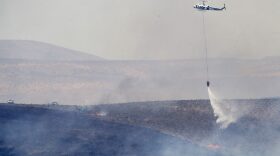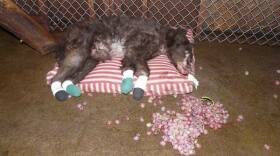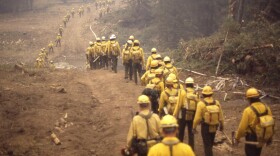-
Washington fire managers say they’ve seen a significant number of wildfires in “every corner of the state.” So far this year, the state Department of Natural Resources says it has responded to more than 468 wildfires of varying sizes – nearly double the 10-year average for an entire fire season. But this year’s unprecedented uptick in the number of fires has an unforeseen culprit: people cleaning their yards during the pandemic.
-
The Washington Court of Appeals on Tuesday dismissed a case against the state brought by more than 300 survivors of the 2014 Carlton Complex wildfire in north-central Washington.
-
Researchers began their detective work, trying to figure out what happened to these treated areas during the first few extreme days of the Carlton Complex fire. They gathered geospatial maps and satellite images.
-
Communication is key in emergencies. That’s especially true when the people you’re working to protect don’t speak English. That’s why Washington emergency management offices are working on their language skills — whether for a fire, earthquake or any emergency.
-
Five years later, the Carlton Complex is still the single largest fire in Washington state’s history. By the end of summer, the Okanogan Long Term Recovery Group will have rebuilt 39 homes. The group’s contractors are putting the finishing touches on the final two homes now. They’ve held a ribbon cutting at nearly each spot.
-
More people in the Northwest are worried about wildfires than they were four years ago. A new poll has found people in Washington are now five times more likely to say they’ll feel the effects of wildfires. In Oregon, people are three times more likely to worry about wildfires.
-
As wildfires become more frequent and intense, the disappearance of snow now ushers in a season of higher anxiety for those who have experienced the destruction of wildfire. And this spring feels particularly ominous, with water levels in ponds and lakes already exposing bathtub rings of pale earth that wouldn’t normally be visible until the end of the dry summer months.
-
A young black bear that was badly burned in the 2014 Carlton Complex Fire in north-central Washington and later became an international inspiration, has died. Officials with the Washington Department of Fish and Wildlife say Cinder the bear was killed by a hunter in fall 2017 but have just this year discovered remains and determined it was Cinder.
-
Wildfire represents both risk and reward for some small communities in Washington. Walking the line between a "good fire" and a "bad fire" can be tricky.
-
Federal and state agencies have come to realize fires should not be fought at all costs and, in fact, many should not be fought at all. Excluding natural fire led to forests burning in bigger, more destructive ways. Each year, hazardous fuels accumulate faster than we can reduce them through selective logging and burning.
Play Live Radio
Next Up:
0:00
0:00
Available On Air Stations









